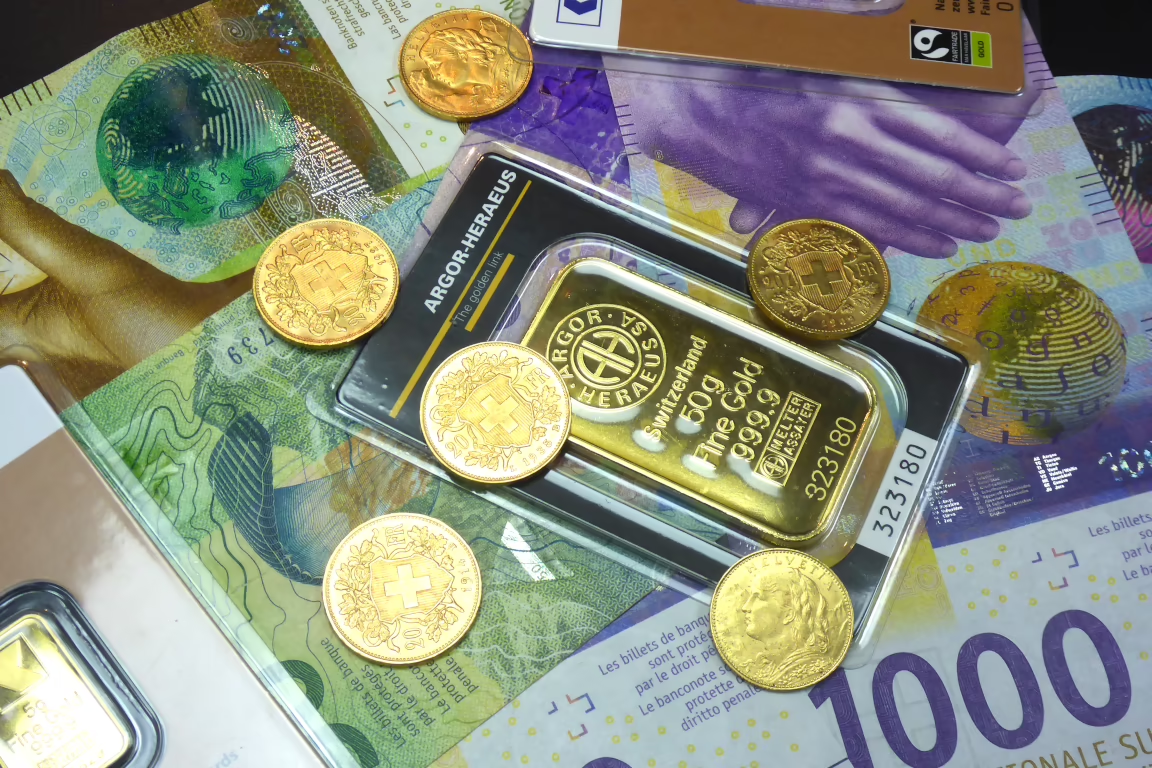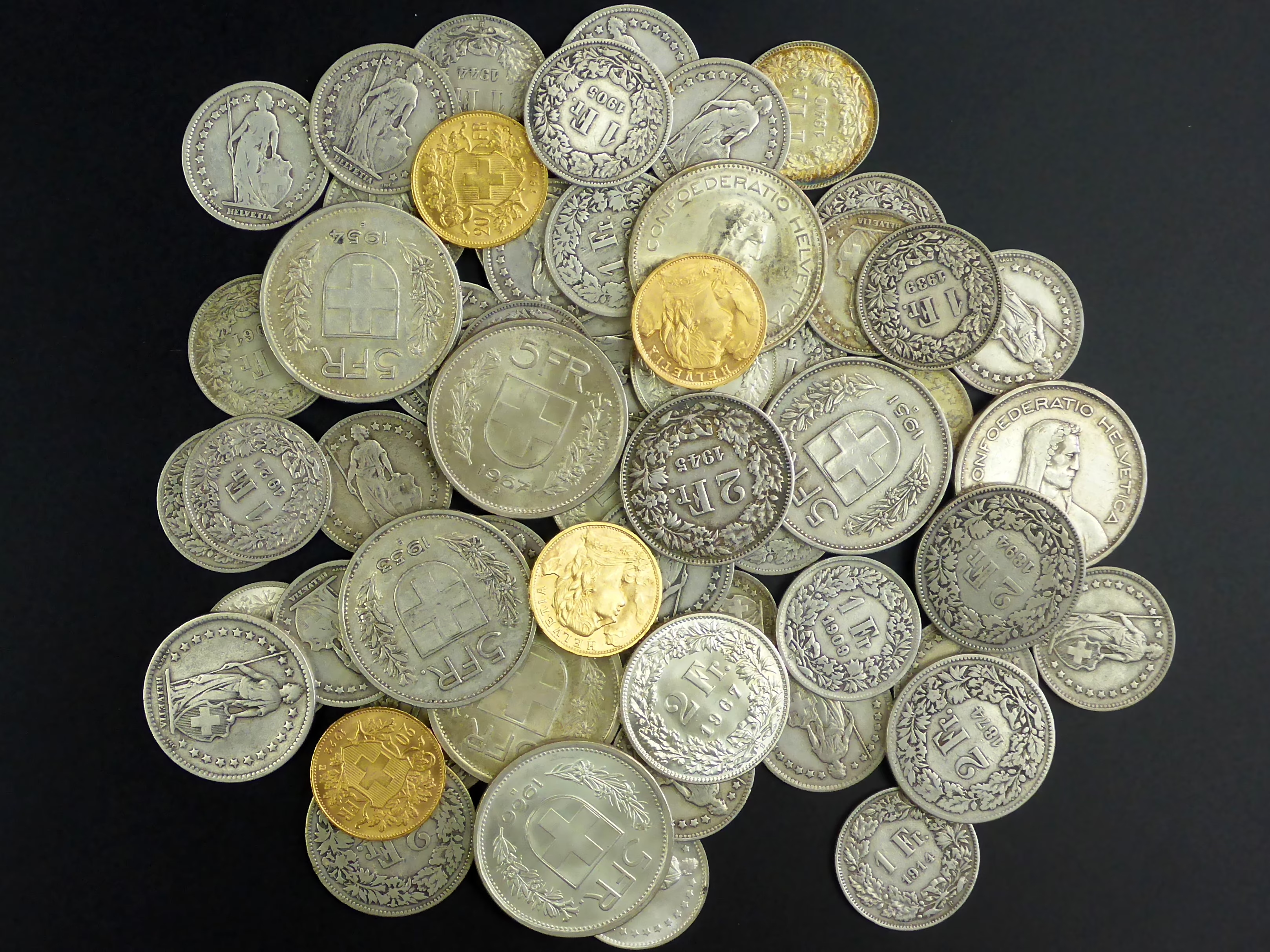Precious metals as an alternative to fiat money and inflation protection
Summary on precious metals as an alternative to fiat money
-
Our modern money system is based on the creation of money by central banks.
-
Money is based on nothing but the will that there be money.
-
The central banks try to control inflation or deflation, price stability is considered the most urgent goal.
-
Fiat money is subject to the laws of the issuing states, precious metals are less affected by state intervention.
-
Precious metals are often bought as a hedge against inflation, but they can be subject to price fluctuations.
The monetary system briefly explained
The money system we know today is based on central bank money and their promise that you can buy something with that money. This system is called the fiat money system. Even if the Swiss central bank still has to have part of the money it issues deposited as gold, the larger part is covered by other fiat currencies, or created out of nothing. The name also comes from this creation of money out of nothing. "fiat" is Latin and means "let there be". Money is based on nothing more than the will that there be money. The money created in this way forms the basis of our economic system and is suitable for acquiring goods and services and for storing assets.
As long as all market participants believe that this common money is worth something and the money is in a constant ratio to the goods and services produced, the system is stable and functions. However, if one of these two conditions is no longer fulfilled, the money can devalue, causing people to lose the savings they store in this money.
Important risk information and disclaimerThis article is intended solely for informational purposes and to provide a critical assessment of the facts. It does not constitute investment advice or a solicitation to buy or sell precious metals or other investment assets. We would like to help you better understand the complex world of fiat money and precious metals and critically evaluate the flood of information. However, we are convinced that the responsibility for any financial decision ultimately lies with the investor himself. Please note:
|
The influence of states on their currency
The currency issued by a state through its central bank is of course also dependent on that state and its laws. Even if the national bank in our modern democracies is supposed to be independent of day-to-day politics in its actions, governments always exert influence on the national banks.
For various reasons, governments may be tempted to tackle economic challenges by influencing monetary policy, or political measures may have a negative effect on currencies. When an oversupply of energy and raw materials met with dwindling demand in the mid-2010s, the EU attempted to boost demand by increasing the money supply through quantitative easing (QE). This involves a central bank purchasing financial securities or government bonds. The money injected into the economy in this way then has an effect. Experts such as those from the IFO Institute or Hans Werner Sinn saw this as a dangerous influence of politics on monetary policy. In the US, too, QE was used to overcome the banking crisis in 2008 and the coronavirus crisis in 2020, with a similar programme being implemented at the same time.
Such influence poses various risks. On the one hand, the purchase of government bonds (government debt) by the national bank may tempt a government or state to spend more money than would be reasonable (monetary financing of the state). On the other hand, the increased money supply, which meets the same supply of goods, can lead to inflation.

In the worst case, this leads to hyperinflation as in the Weimar Republic at the beginning of the 20th century or in Zimbabwe at the beginning of the 21st century.
The advantages and disadvantages of inflation
Inflation, which is targeted by national banks worldwide, is a small, targeted devaluation of money. In industrialised nations such as Switzerland, inflation is targeted in the low single-digit percentage range (e.g. 2%). Thus, if the National Bank succeeds in achieving its goal, after one year one can buy 2% fewer goods for one's money.
Inflation has several advantages for states. Among other things, it encourages all market participants such as companies, banks and private individuals not to hoard their money but to spend it for goods and services. If you make the money available to third parties or put it into your own projects, you should get back more money than you invested, whereby this more should also be greater than inflation. Investments therefore serve economic growth.
As a private person, however, one can also spend one's money without expecting a profit, in the consumption of goods and services such as cars, consumer electronics, holidays or well-being. This also promotes the economy that produces these goods and services. Inflation promotes such consumption, as the consumer receives more goods and services for his money this year than next year.
For the state, inflation has an even more important advantage besides its economy-promoting properties, the devaluation of the national debt. If money becomes worth less and less due to inflation, the national debt also becomes worth less and less. This makes it easier for the state to repay debts it has taken on in its own currency in the future.
The opposite of inflation: deflation
Inflation is the devaluation of money, so the opposite must be the increase in the value of money. For consumers, this means that they will receive more goods and services for their money next year than this year. When deflation becomes too great, consumers and companies begin to postpone their spending into the future, as they are then likely to get much more for their money. However, this behaviour slows down the economy and can lead to suppliers of goods and services trying to increase their sales again with price discounts, which in turn contributes to deflation. This vicious spiral is the reason why politicians prefer inflation to deflation, and aim for it.
Gold as a protection against inflation
But if you do not want to spend or invest your money, you would be exposed to inflation without precious metals. Precious metals, especially gold, have a reputation as a protection against inflation. This is because, over the centuries, you always got more or less the same goods for the same amount of gold.
In 1900, a pair of shoes cost CHF 7.501, which was equivalent to 2.175 g of gold; in 1905, a shirt cost CHF 4.751(1.38 g of gold at the time).
This very example illustrates the problem of inflation: if you had bought gold for 7.50 CHF 150 years ago, you could still buy a pair of shoes for that gold today. If you had put the money under your pillow, you would only get a pair of socks for it.
Silver as a protection against inflation
In contrast to gold, the historical inflation protection of silver is worse. This is due to the bimetallism of the old monetary system, the natural quantitative relationship between gold and silver and the importance of silver in industry.
If we take the example of shoes costing CHF 7.50 in 1900 again, CHF 7.50 would have bought 33.75 grams of silver at that time, or slightly more than one ounce.
So if silver has been a worse protection against inflation than gold over the last 120 years, one has to acknowledge that it would have been better to hold one's money in silver than in cash.
Register now at PreMeSec.ch and buy and sell precious metals!
Price fluctuations
One disadvantage of inflation protection with precious metals should not be concealed here and should also be clear to everyone who buys precious metals for this reason. The disadvantage is the price fluctuations. In 2020, for example, the price of gold first gained about 25%, only to lose 14% of its value against the Swiss franc again. So in the short term, price losses can be sensitive.
However, it should also be borne in mind that inflation protection with normal inflation between 1-3% is a rather long-term goal, since such low inflation only really becomes noticeable over several years with the compound interest effect. Within a year, inflation is low and thus does not pose a threat to assets.
Buying precious metals as a protection against inflation
If you decide to buy precious metals, for whatever reason, you should consider several things. Firstly, you should only buy easily resalable investment precious metals. This includes various bars from LBMA-certified refineries as well as the well-known gold and silver coins such as the Krugerrand, Maple Leaf, Vienna Philharmonic and others.

Secondly, one should not buy too large pieces, so that one only has to sell as much precious metal at a time as one needs liquidity at the moment. If a simple repair to your house costs CHF 10,000, you should not have to sell a whole kilo of gold for CHF 55,000, but have a few 50 or 100 gram bars available.
The third point is somewhat contradictory to point 2, namely one should pay attention to the smallest possible difference between the buying and selling price. This difference is also called spread and increases in percentage the smaller the denomination. For 10 grams of gold, the spread can be as high as 5%, while for a kilo it is around 1%. For silver - which is subject to VAT - the spread is at least the current VAT rate. For the price per kilo of silver, the difference is easily around 17%.
It is therefore advisable to compare the spreads of different providers carefully before buying and selling in order to keep transaction costs as low as possible.
Frequently asked questions about the fiat money system
Why did gold/silver coins exist in the past?
Before central banks declared official currencies, created paper money or digital money and guaranteed the value of this money, people exchanged gold or silver for goods. During this time, various rulers such as princes and city states had the right to issue coins. By minting a coin, the maker guaranteed both the purity of the precious metal and the weight of the coin, but the value itself was the precious metal contained in the coin.
Is the gold standard the only alternative to the fiat money system?
No, other values are also conceivable and were already used before the fiat money system. Objects of exchange were silver, bronze, shells, stones or precious stones. Today there are also cryptocurrencies, but apart from the physically backed stablecoins, they are also fiat currencies.
Is the fiat money system bad?
Whether the fiat money system is bad and whether a gold standard would not be better is a much debated question. Each system has its strengths and weaknesses, but in general it can be said that a state with a fiat currency has more influence on the economy and can intervene more strongly in crises. However, it is precisely this influence of the state on the economy that some people see as harmful and therefore reject.
Text sources
1)(Jürg Siegenthaler, 1965. ‘On the standard of living of Swiss workers in the 19th century,’ Swiss Journal of Economics and Statistics (SJES), Swiss Society of Economics and Statistics (SSES), vol. 101(IV), pages 423-444, December) Available as a PDF at https://www.sjes.ch/papers/1965-IV-3.pdf
